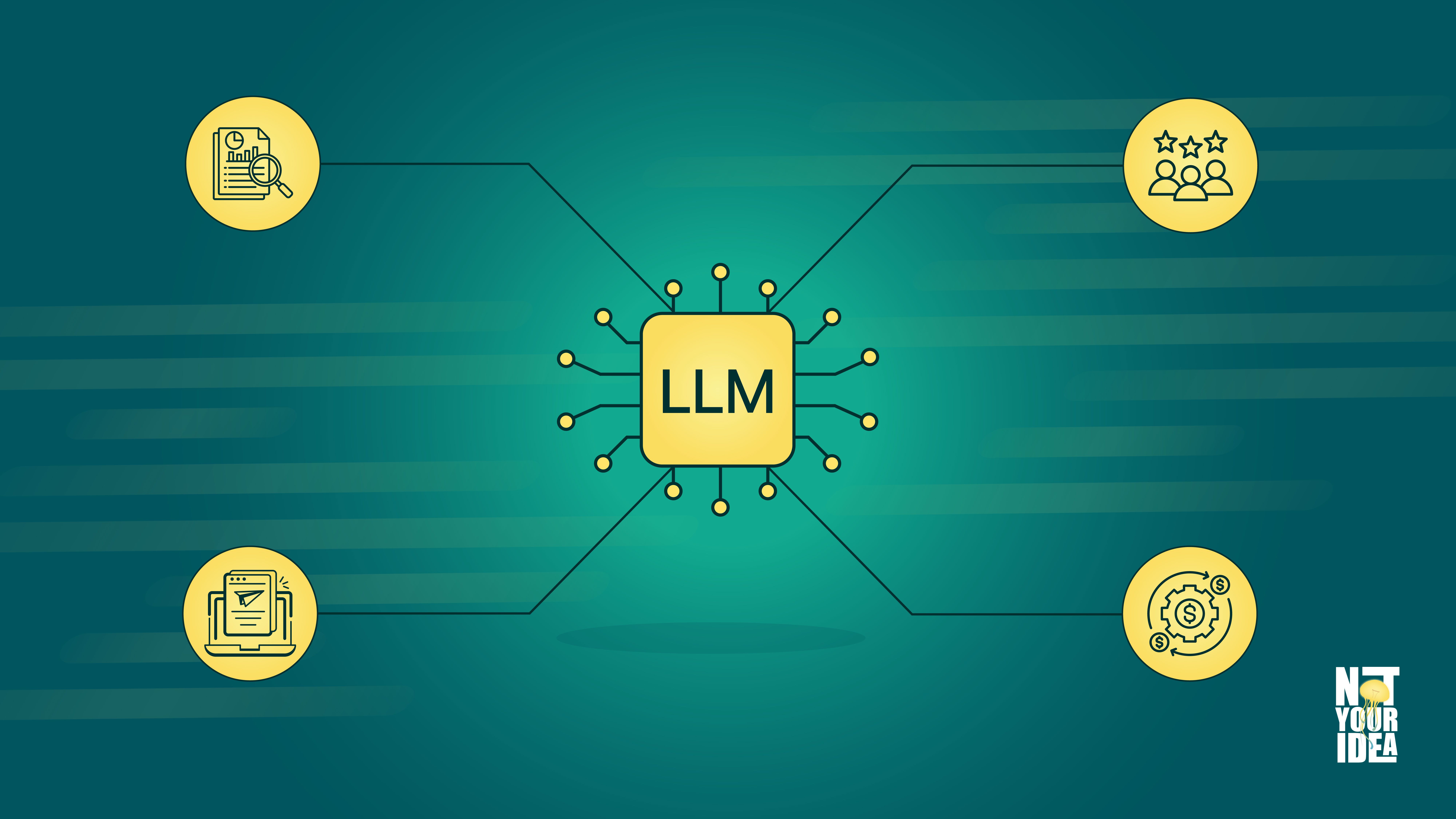Recent developments in Large Language Models (LLMs) have created one of the most powerful tools for competitive advantage possible. Powerful and accessible to the larger masses, anyone willing to think strategically can adopt these AI systems to improve operations and drive growth.
For business owners and technology leaders, the analysis of how to strategically use LLMs for your organization goes beyond just limiting yourself to the ever-increasing technology trends. It’s also about shaping organizations for future success amid an increasingly digital marketplace.
Ways to Use LLMs in Business
1. Automate Content Creation
LLMs have a remarkable capability to create any type of content, from marketing materials to ad copy. This isn’t to suggest that you replace entire teams with an LLM to cut down on costs and production time! The role of generative AI in content marketing isn’t to replace; it’s to assist. The trick is to save time and brainpower by using the LLM in initial draft stages.
For marketing teams, this means having a creative partner to develop ad copy, social posts, and email campaigns across channels while staying true to the brand voice. For product-focused companies, LLMs can provide a range of examples for product descriptions, fetch quick responses for FAQ sections, and more.
2. Sentiment Analysis
LLMs offer advanced capabilities for analyzing customer sentiment beyond just positive or negative designations. When LLMs constantly analyze incoming tickets and processing descriptions, they can detect when certain issues keep cropping up, signaling an underlying problem that needs fixing. They’re able to track multiple sources at once, giving teams holistic views of chat logs, mentions, reviews, and more.
Social media monitoring also becomes more productive, as LLMs analyze the mentions and reviews across various platforms, giving marketing better ideas about their strategies.
3. Predictive Analysis
LLMs bring high-level predictive capabilities to business intelligence, allowing organizations to make more accurate predictions about customer behavior and trends. They can provide sales forecasts that leverage historical data, market trends, and other external factors, contributing to their ability to predict future behavior.
Organizations can also find opportunities to upsell or personalize their marketing based on historical purchases and patterns of customer interactions. Overall, it’ll help increase marketing ROI while helping you measure the ROI itself as well!
4. Enhance Workflows
LLMs can help enhance existing business workflows throughout most functions. Human resources can specifically benefit from automated resume prescreening and tailored onboarding knowledge systems. Financial transaction processes can be optimized to create automatic and large-scale invoice processing capabilities, or to assess large financial datasets on expense reports. Legal workflows get enhanced with contract reviews and compliance monitoring, flagging oversights and errors so teams can respond accordingly.
Advantages of Using LLMs in Business
Enhanced Operational Efficiency
When integrated well, LLMs can fulfill repetitive tasks that require a lot of human time. This frees up teams to spend time on higher value-added strategic work.
Increased Customer Experience
It’s about 24/7 customer support, customized recommendations, the ability to answer complex inquiries very accurately! LLMs can keep context between interactions and adjust tone to fit individual customer preferences. Customer service reps get involved when necessary, and can spend time looking into how better to target their audiences.
Improved Data-Driven Decision-Making
LLMs can review large amounts of unstructured information and uncover actionable business intelligence about customer opinions, market research, and internal documentation. Sifting through the data is no longer the priority since the LLM looks after that, thanks to which actual decision-making is enhanced.
Reduced Costs and Scalability
There’s an evident reduction in cost and scalability as operational costs reduce with automation of repetitive tasks while at the same time improving scalability without increasing headcount or costs.
What Are the Possible Challenges?
- Data Privacy and Security are primary issues and should be studied with careful attention to protocols of handling and protecting data.
- Integration Complexity will often be a barrier because legacy systems often do not integrate well with the new technologies of AI. This means both ongoing technical expertise and, more than likely, additional investments in infrastructure.
- Quality Control and Accuracy continue to be an issue since LLMs regularly generate incorrect information called ‘hallucinations’. Organizations will need to legitimize verification processes and ensure human supervision in applications of significant importance.
- Cost Management is important as usage grows so that businesses can monitor usage and continue to receive a positive ROI.
- Skill Development means investing in training programs, as employees will need to learn how to work effectively with these new technologies.
The marketplace across the globe is well into absorbing AI and LLMs to analyze and execute across teams. Organizations on track for success are ones that view LLMs as powerful tools that enhance human capabilities rather than technologies designed to supplant human jobs. The question is no longer when to begin; it’s how to be effective and responsible while engaging these technologies.
FAQs
How to Avoid Bias In LLMs?
To avoid bias in LLMs, it's essential to use diverse, representative training data and implement regular audits to identify and correct biased patterns. Additionally, bias mitigation techniques, such as adjusting algorithms or training with fairness in mind, can help ensure more neutral outputs.
What Can I Build With LLMs?
With LLMs, you can build applications like chatbots, automated content generation tools, language translation services, and personalized recommendation systems. They can also enhance search engines, sentiment analysis, and virtual assistants for various industries.
Can LLMs Create New Ideas?
LLMs can assist in generating new ideas by combining existing knowledge in novel ways, but their creativity is limited to patterns learned from data. While they can offer innovative suggestions, true originality often requires human insight and intuition.
Can LLMs Generate Charts?
LLMs themselves cannot generate charts directly, but they can assist in creating chart descriptions or provide code to generate charts using tools like Python or Excel. For visual chart creation, external tools are needed alongside LLM-generated instructions.
Is ChatGPT an LLM or Generative AI?
ChatGPT is both an LLM and a type of Generative AI; it understands the prompt of the user and gives the output, which can be original as well as from sourced websites in the form of text, image, and much more.



